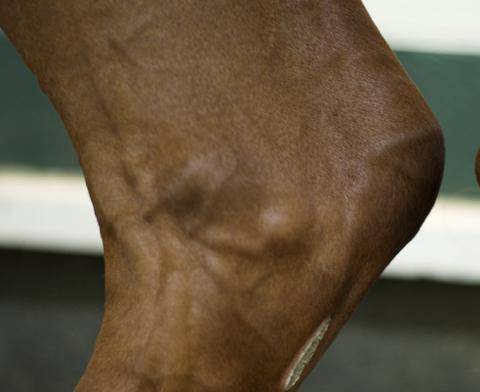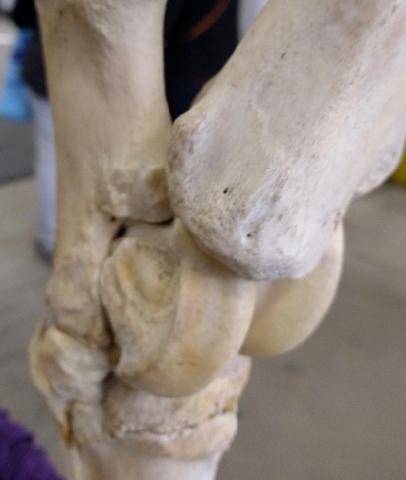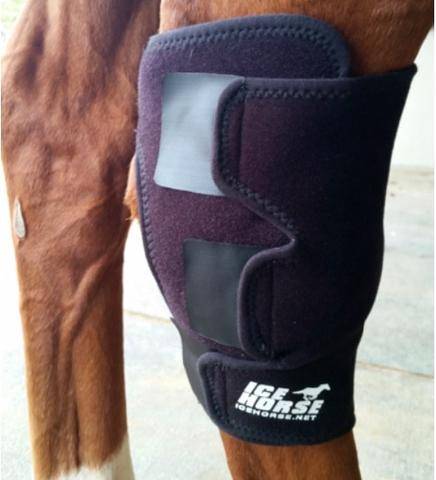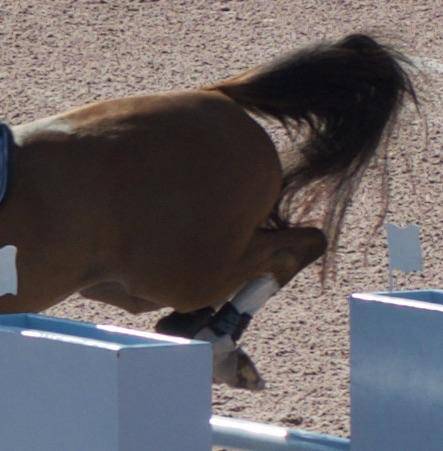Your Cart is Empty

The Hock Joint of the Horse

The hock joints of your horse are located on the hind legs just above the cannon bones. They are equivalent to the human ankle. The hock functions to carry weight, push off the earth, and allow your horse to run, jump, turn, and play. The hock joints are such an important joint to all equine athletes, regardless of discipline.
The entire hock area is actually made up of bones, joints, ligaments, tendons, and fluid. There are four joints in the hock, four extensor tendons, four collateral ligaments on each side of the hock, and two flexor tendons that run through the hock.
The joints are as follows from top to bottom:
- TCJ - Tarsocrural joint
- PIT - Proximal Intertarsal Joint
- DIT - DIgital intertarsal joint
- TMT - Tarsometatarsal joint
The lower joints can actually fuse over time. They can also be fused with surgery. This is sometimes helpful for the horse with chronic hock soreness, arthritis, or other issues that cause discomfort and poor performance.
Many horses experience soreness and changes in the hock joint over time. This is a function of “wear and tear”, injuries, conformation, overall health, fitness level, proper foot care, and even diet. Supporting your horse’s hocks help your athlete stay sound, comfortable, and willing to work.


You will be able to notice a few things about your horse’s hocks that give you an idea of how they are feeling. Keep track of:
- Size and shape. They should by symmetrical.
- Heat and swelling. Any obvious heat and swelling can indicate a new injury. You will likely not be able to discern the heat and swelling that goes along with arthritis and similar “wear and tear” issues.
- Any hair loss. This might indicate that he’s brewing a hock sore.
- How does your horse walk? Are his steps symmetrical and landing at the same point under his belly?
- How does he act under saddle? Sluggishness, unwillingness to work, and refusing jumps might tell you something is wrong somewhere. The same goes for bucking and other naughty behaviors.
- How readily does your horse pick up his hind legs to have his hooves picked? You will often see resistance if a horse’s joints are sore.
- Is your horse’s back sore? This is a common sign that it’s actually his hocks that are sore. But don’t rule out saddle fit!
Joints and soft tissues will become heated and develop inflammation as your horse works. This is the “wear and tear” that over time can contribute to joint soreness. The soft tissues that work hard are also subject to soreness, just as your muscles are sore after a work out. Taking care of our horses means attending to this, and as owners and care takers we have lots of options to support your horse’s hocks and surrounding tissues.
Ice therapy in the form of Ice Horse Hock Wraps give proven cold to reduce inflammation and pain. Even if your horse shows no signs of discomfort, icing after riding will help him feel better and recover faster.
Always work with your Veterinarian to come up with a plan for your horse’s hock health to keep him a happy athlete for many years.


